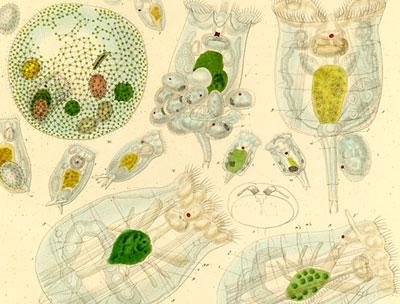 What does the cell membrane have in common with filters, sifters, and colanders? All of the above are SEMI-PERMEABLE, meaning some substances can pass through them, while others can't.
What does the cell membrane have in common with filters, sifters, and colanders? All of the above are SEMI-PERMEABLE, meaning some substances can pass through them, while others can't.In this week's experiment we used dialysis tubing (thin layer of material that contains various sized holes) to model the cell membrane. We tied off the dialysis tubing with string to create a bag that we filled with corn starch solution and glucose solution. First we submerged the bag in a jar of water and tested the surrounding water for the presence of glucose using glucose strips. Then we replaced the water with iodine. We waited a few minutes to see if there was a color change in either the bag or the jar. Iodine turns black upon contact with starch, so a color change inside or outside the bag would demonstrate which molecules had traveled through the bag. Check out the picture, and see if you can guess which molecule, starch or iodine can travel through the bag. Hint: Bigger ISN'T better.






